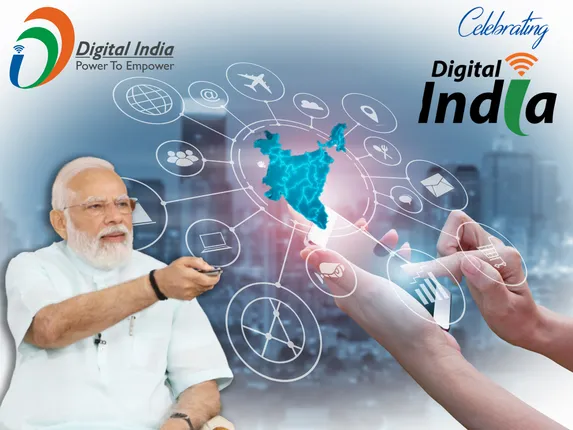The Digital India initiative, launched on 1st July 2015 by the Indian government, is a monumental stride towards shaping a digitally empowered society and knowledge-centric economy. This landmark endeavor embodies India’s commitment to leverage technology for comprehensive societal transformation.
One of the basis of Digital India is the making of a robust digital infrastructure. This includes the development of high-speed broadband connectivity in rural areas, the establishment of Common Service Centers (CSCs) in villages, and the deployment of public Wi-Fi spots.
Central to this initiative is the intent to minimize cumbersome paperwork and foster a digital platform for government services, thereby making governance efficient, transparent, and universally accessible. Such a shift is not just a boon for urban dwellers but promises to be a game-changer for rural populations. The impact of reducing paperwork is multifold; it saves time, reduces administrative burdens, and significantly decreases chances of errors.
A cornerstone of the Digital India drive is the construction of a sturdy digital infrastructure. It aims to be a core utility for every citizen, ensuring uninterrupted connectivity even in the remotest parts of the country. High-speed internet access in rural regions is pivotal in this regard. The ambitious Bharat Broadband Network Limited (BBNL) champions this cause, spearheading the mission to establish high-speed digital highways across India’s vast topography.
An additional layer to this initiative is the promotion of digital literacy. By championing universal digital resource access, individuals from all socio-economic backgrounds stand to gain digital proficiency. This not only empowers them with essential online navigation skills but also ushers in an era where essential services like e-health, e-education, and e-governance are at their fingertips.
Under the proactive leadership of Prime Minister Narendra Modi, the Digital India campaign has secured substantial investment from national and international stakeholders. Renowned industry stalwarts have pledged their support, reiterating the project’s potential to redefine India’s developmental trajectory. Beyond technological enhancements, the program underscores the pivotal role of digital literacy in shaping an informed and empowered citizenry. Seamless electronic service delivery ensures every Indian has unfettered access to information and opportunities.
The project’s e-Governance model is particularly commendable. Envisioning a digitized administrative landscape, services ranging from scholarship applications to medical appointments are transitioning online. Such a shift augments ease of access and expedites processes, laying the foundation for a responsive administrative apparatus.
A ripple effect of this digital-first approach is the predicted surge in IT-centric job opportunities. As India accentuates its digital footprint, IT professionals and digital service providers will witness unprecedented demand. IT hubs and burgeoning start-ups stand as testaments to this potential growth, heralding a prosperous future for India’s tech-savvy youth.
In summation, the Digital India initiative transcends mere technological advancement. It represents a holistic vision for a resurgent India, where digital empowerment is both the means and the end. As the nation progresses on this transformative journey, the horizon promises infinite potential, making Digital India not just a campaign but a clarion call for a brighter, inclusive future.

